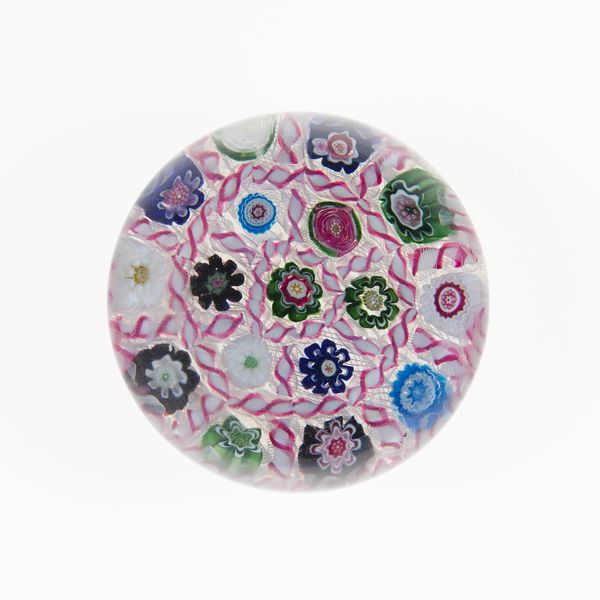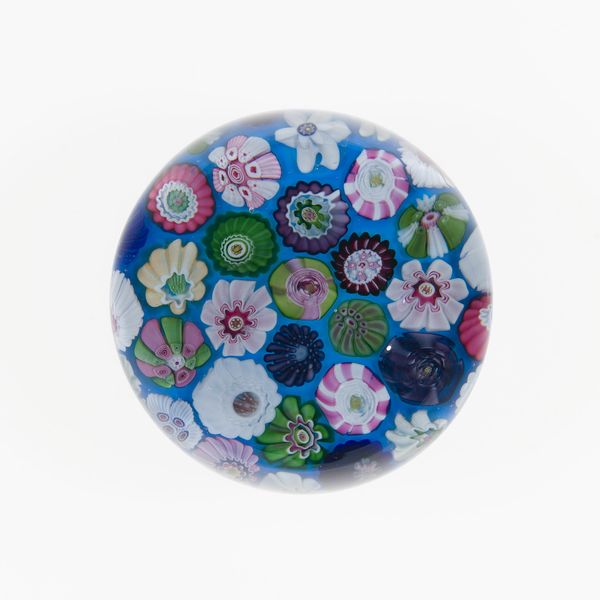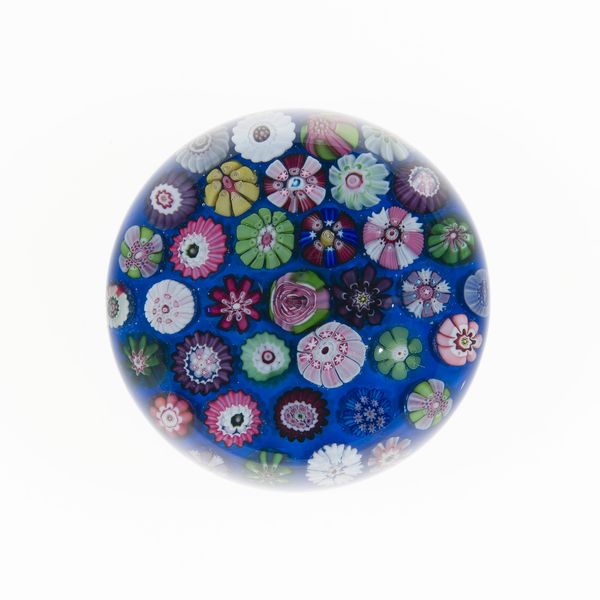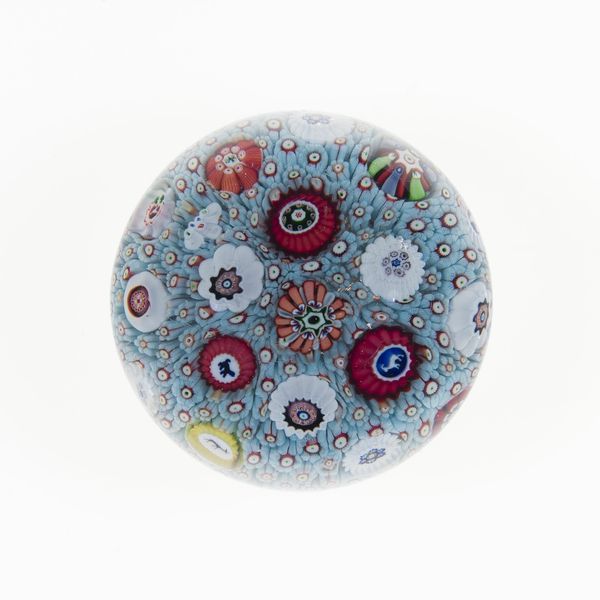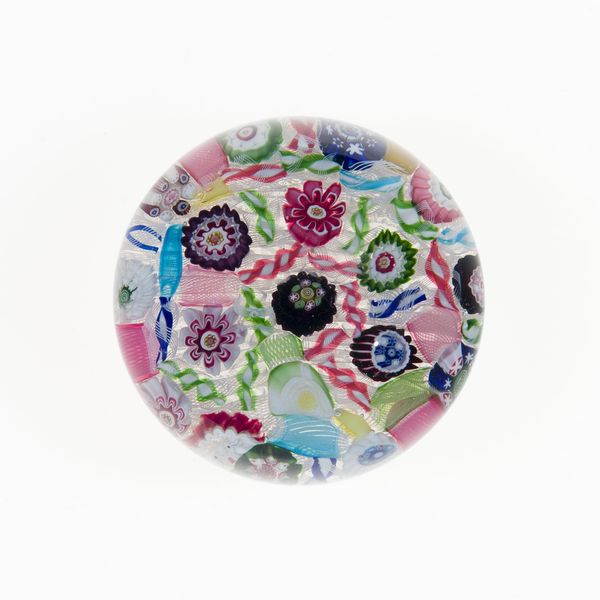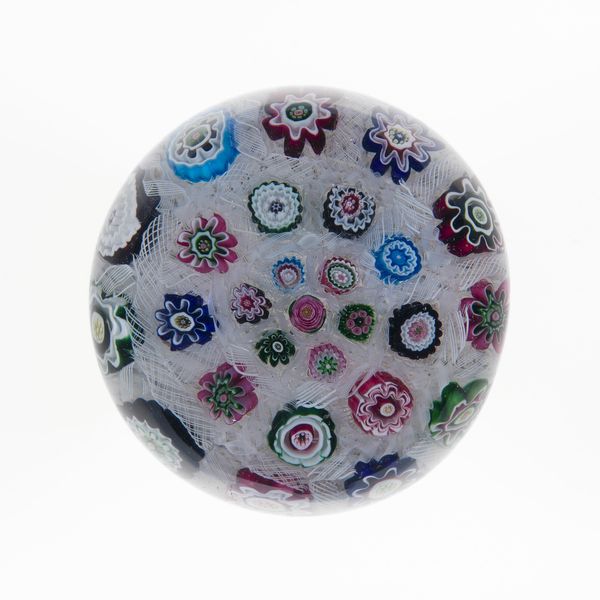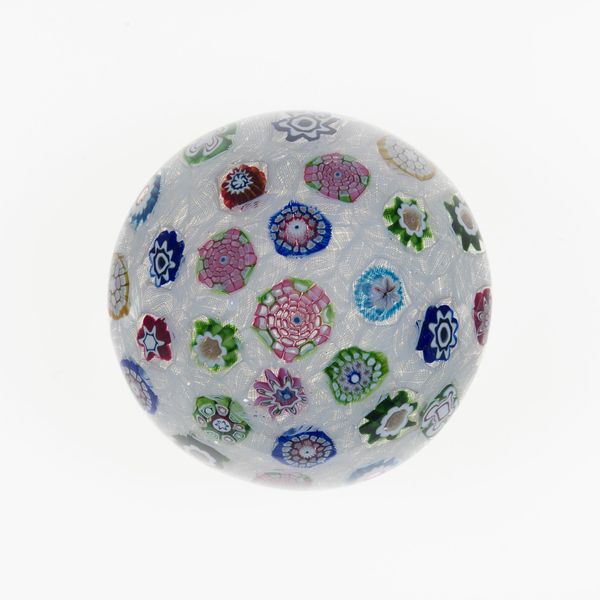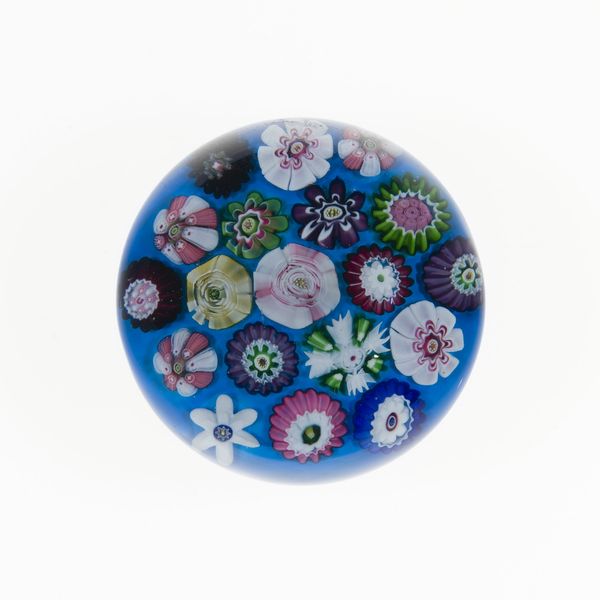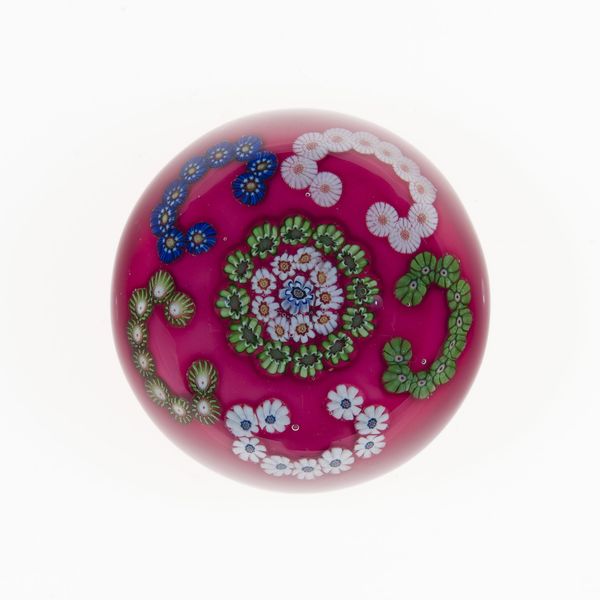
Dimensions: Diam. 6.5 cm (2 9/16 in.)
Copyright: Public Domain
Curator: Looking at this Clichy Glasshouse "Paperweight," created sometime between 1845 and 1860, one can’t help but be struck by the sheer artistry involved in manipulating molten glass. Editor: It's such a captivating object. There’s almost something melancholic about it. Encapsulated beauty frozen in time, wouldn’t you say? A kind of memento mori for the Victorian era. Curator: In terms of production, consider the skill necessary to arrange those intricate millefiori, those "thousand flowers" as it translates from Italian, within the dome of glass. Each tiny element would have been individually created, then carefully positioned. What a testament to specialized labor and craft! Editor: And let's consider that act of preservation, then. Burying these perfect blooms beneath layers of glass—the piece almost critiques Victorian society's obsession with control and permanence, while simultaneously providing an opulent adornment for the bourgeois desk. Curator: Yes, and the controlled environment necessary for such exacting work likely played a role in fostering the innovations specific to the glasshouses in that era. The specific techniques used and refined allowed for more precise and beautiful effects. Editor: Definitely. Furthermore, glass production, particularly for luxury items like this paperweight, was inherently linked to the Industrial Revolution and expanding trade networks. Who owned this, how did it end up where it did? We need to explore further. Curator: Examining the social status associated with the possession of such decorative items brings us closer to an understanding of production of similar goods. In doing so we better contextualize this singular work of art, especially for future researchers. Editor: It's far more than just a paperweight, of course. It serves as an artifact rich with historical, societal, and personal meaning. Its existence pushes us to reflect on class, industry, and the long reach of cultural desire and aesthetic choices. Curator: Precisely. A beautiful intersection of the decorative and functional arts, which makes this item a valuable touchstone for the examination of culture through the production of goods. Editor: Indeed. Thinking through the details helps this objet d'art to become a portal into understanding ourselves.
Comments
No comments
Be the first to comment and join the conversation on the ultimate creative platform.

